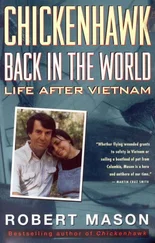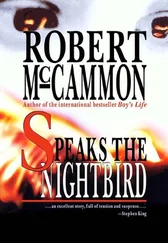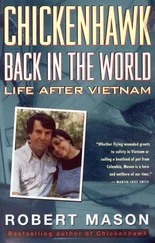Leese had been talking to someone at the edge of the flight deck while Connors took off. He walked toward the Huey. “Let’s go.”
I opened the left door, put my foot on the skid, and leaned over to grab the far edge of the armored chair. Leese was getting in on the other side, and my cyclic stick moved as he bumped his with his leg. I slid my leg between the cyclic and the front of the seat and lowered myself onto the nylon mesh. Reacher stood outside next to me and handed me the shoulder straps and radio cord from behind the high-backed seat. I clicked the lever over to anchor the shoulder straps to the wide lap belt. Another crew chief from the ship behind us helped Leese with his straps. Strapped in, Leese released the inertial reel lock so that he could lean forward to do the cockpit check. Starting at the bottom of the center console beside his left foot, he moved his hand over the many switches and circuit breakers, checking their positions. His hand moved over the top of the console between us and checked that the radios were off. I followed him and clicked in the proper frequencies. I pulled on my brand-new leather flying gloves. They would last two weeks in this climate. Leese pushed in the igniter circuit breaker on the overhead console and announced, “Okay, we’re ready to crank.”
We slipped our flight helmets on. I grabbed the base of mine on both sides to spread it slightly and pulled it over my head. I forgot to pull the earphones back with the outside strings, so one of them lodged crookedly against my left ear. I pulled the string loop on that side to pull the rubber cup away and reseat it. The phones were dead until Leese flipped the master switch. He squeezed the radio trigger switch on his cyclic to the first click and said through my phones, “Ready?” I did a thumbs-up. He turned to look out his door window, to make sure someone was posted there with a fire extinguisher. Someone was. He nodded, and the man raised the red bottle to the ready. Leese rolled the throttle open to the indent starting position and squeezed the trigger switch on his collective. The electric starter motor whined shrilly. The rotors accelerated slowly. I was always amazed that any electric motor could turn the engine, transmission, and those big rotor blades. The rotor blades blinked. A loud hissing noise, audible over the moan of the starter, meant that the fire had caught in the turbine. Leese watched the exhaust-gas temperature gauge (EGT) carefully. The needle rushed past the red line, and the rotors spun to a blur. The EGT stayed pegged in the danger zone as usual for a couple of seconds before it moved back into the green, operating range. Leese did a thumbs-up to the watching fireman. The danger of a hot start had passed. The Huey had snapped into smooth operation after more than a month of storage.
I tapped all the gauges on my side of the instrument panel. Everything was in the green. “Everything okay back there?” Leese called to Reacher on the intercom.
“Yes, sir, everything is secure.” We carried no gunner on this trip.
The deck rolled while the Croatan lay at anchor. Leese opened the throttle to the operating position and briefly checked the blurry edge of the rotor disk to see that it moved correctly as he pushed the cyclic around. As he slowly pulled the collective up, the nose of the Huey characteristically rose first, and he corrected for drift inclinations. When the helicopter was stable, he raised the collective and pulled us above the moving deck.
I looked out at the circle of spectators and saw their clothes flapping in our gale. Leese hovered for a few seconds at six feet, checking the gauges one last time before he nosed the ship forward with an imperceptible push of the cyclic. I watched the edge of the flight deck move under us through the chin bubble at my feet. The sea churned below us. We were on our way.
In the final analysis the final outcome of the war will be decided by the sustained fighting of the ground forces, by the fighting at close quarters on battlefields, by the political consciousness of the men, by their courage and spirit of sacrifice.
—Lin Piao, September 1965
September 1965
We landed at Qui Nhon to have our tank topped off to its 1200-pound, 200-gallon capacity before the flight to An Khe. Beneath the overcast sky the air was hot and moist. The smell of human waste drifted from the sand dunes beyond the concertina wire that bordered the runway, apparently part of the city’s latrine. I saw people squatting among the dunes and shreds of paper drifting in the breeze. We stared like tourists at the people we had come to save. A young boy wiped himself with a bare hand and then licked same.
“Gawd.” Leese shook his head and turned away.
Leese flew. I followed the map, keeping track of our position so I could radio in our coordinates if we went down. The VC-controlled valley between Qui Nhon and the An Khe pass was a vast swamp of rice paddies. The road we were following was considered partially safe. Leese climbed up to the cloud ceiling at 3000 feet.
The map was dotted with names like An Dinh, Luat Chanh, Dai Tio, My Ngoc, and a hundred more, crowded around the outskirts of Qui Nhon. The valley stretched twenty miles north to Bong Son and stopped just a kilometer (or “klick”) south of us at the foothills. Fingers of high ground pushed nearer from the south along the road. These ridges were about 1500 feet high and completely covered with lush jungle. Occasionally I saw clearings on the sides of the hills where banana trees grew. While Leese flew, I conjured up grinning VC who sighted along the barrels of their guns as they stood concealed under the green canopy. It suddenly became obvious to me that I was completely exposed to any fire that came from the front. Chest protectors would be nice. Total armor with a slit to see through would be better. Flying back to the ship would be even smarter. I looked over at Leese. He smiled. The pass loomed ahead.
“Here, you take it for a while.”
“I got it.”
Below us the narrow road twisted upon itself as it began to climb up through the steep foothills. As the ground rose toward us, I could not resist pulling a little pitch. Two hundred feet higher and we flew through occasional wisps of cloud. The world disappeared for a few seconds each time.
At the top of the pass the ground rose to within 800 feet of us. The empty road ran through thick jungle. A tall hill called Hong Kong Hill, ten miles ahead, marked our camp.
“A lot of nice places to hide down there,” I said.
“I’ll say,” Leese said quietly as he watched the ground. From our vantage point Vietnam looked very big and very green with its thick covering of jungle. It looked like a great place to have a guerrilla war, if you were going to be the guerrilla. “I’ll say,” Leese repeated.
The overcast was breaking up ahead, and the jungle glowed green between dark shadows formed on the ground. Leese reached over to click the radio to our company frequency. I felt the cyclic move slightly as he squeezed the radio trigger. “Preacher base, Preacher eight-seven-niner.” Our ship’s tail number.
“Roger, Preacher eight-seven-niner. Go ahead.”
“Preacher eight-seven-niner at the pass. Where do we park?”
“Preacher eight-seven-niner, call Golf Course control and they’ll clear you to land at our parking area. We’re located at the south end of the field on row three. We’ll send someone to pick you up. You copy?”
“Roger, Preacher base. Eight-seven-niner out.”
As the land sank toward An Khe, I reduced the collective and let the ship descend slowly. Dead ahead of us, just north of the road, was Hong Kong Hill, the western border of Camp Radcliff. The Golf Course, the heliport cleared of all its trees, stood out against the green.
Читать дальше












